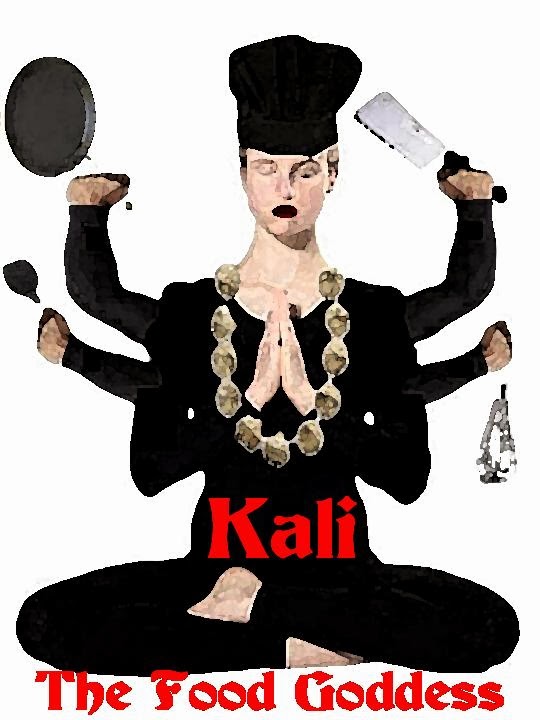"Peruvian cuisine" is one of the Top 50 hot trends for 2014, according to the National Restaurant Association. I
do not know if they expect specific Peruvian dishes to make it into
restaurants at large (a cuy sandwich at McDonald's?) or if we are to expect a sudden increase in
Peruvian restaurants.
To be
fair, Peru has one of the more varied influences in the Latin
American landscape. Most countries in Spanish speaking countries
have, at a minimum, Spaniards and slaves (with a predominance of West
African countries) to thank for their national dishes.
Peru
boasts not only Spanish cuisine and African influences, but it adds
Chinese and Japanese cuisines, Italian and German, and the ancient
and native cuisine of the Inca (hello, quinoa!).
The
holy trinity of Peruvian staples are simple and yet, influential
beyond their borders: chili peppers, corn, and potatoes. To that, add
the staples of each group that has made a home out of the country and
you have the ultimate trend-setter in fusion cuisine.
Probably
the most widely known Peruvian culinary tradition is a piece of
fusion cuisine: ceviche –
which combines marinated raw fish (Japanese), with chili peppers
(Andean) and red onions marinated in lime (Spaniard). This is a
simplified explanation, of course, and it doesn't take into account
the complexity of the dish.
For
the few unfamiliar with the idea, the lime marinade cooks the fish
and gives it a delicate taste. The leftover liquid from the citrus
marinade can be ingested as well and said to be a delicacy called
leche de tigre (tiger's milk).
The
other thing that makes Peru quite special, besides multicultural
diversity, is diversity in its geographical landscapes. Peru has
mountains (Andes), valleys (including land bordering The Amazon), and
a Pacific Ocean-facing coastline.
This
means that they grow a great number of indigenous roots and tubers,
fruits and vegetables, grains and beans; have an abundance of fish
and seafood; and their diet also includes the troika of meat sources
(chicken, pork and beef). You can find omnivore, vegan, and
pescetarian recipes in their national repertoire of dishes.
There
are several fruits, indigenous to the Andes that I grew up with in
Puerto Rico, and which are available here at produce stands. I am not
certain how widely available these may be across the nation, but if
you can find any of these, I highly recommend you try them out.
Guanábana,
also known soursop, a somewhat pear-shaped fruit with a green,
prickly skin. The flesh (pulp, if you wish) is white and has bean-sized black seeds. It is sour, though not overly so and its
flavor is a combination of coconut milk with a citrus base. It may be
eaten as is, you can juice it, make it into thick, creamy shakes, ice
cream or frozen fruit bars.
Papaya
is probably the most popular of their native fruit and comes in
yellow and green skins, shaped like over-sized mangoes and sometimes
pear shaped. The flesh varies from a salmon color to a light red, and
along the center of the fruit a fibrous wall holds the seeds—which
are spicy and peppery and edible. The ripen fruit is usually eaten
uncooked, although it may be cooked too (and made into jelly). I
understand that some people bake papayas. Of course, it also is a
staple in fresh fruit salsas.
Mamey,
also known as mamee apples, are round and have a dark skin (usually
brown). Once you cut them, they have a large seed like an avocado.
The flesh is yellow to orange, and can be relatively soft and juicy
depending on ripeness, although texture varies. It is naturally
sweet, but not overly so. It can be a little bitter, but it is made
into jams and jellies, fruit salads, and even fermented into a
liqueur.
Both guanábana
and papaya nectar and
juice can be used in rum-based cocktails and also as a base
for meat tenderizers and BBQ sauces, and in curries or chutneys.
My
next adventure will be to try the pitaya,
or Dragon Fruit. It is one of the coolest looking things you'll ever
set eyes on. They come with red skins and either red or white flesh with tiny seeds (black specs). I understand they might sour, but cannot
describe them as I haven't bought one yet. Still, who wouldn't want
some of this? Look at it, it's awesome!
UPDATE: If you enjoyed this article and the recipes in it, you can link to its companion piece, a dedicated Pinterest board you can refer to any time.



